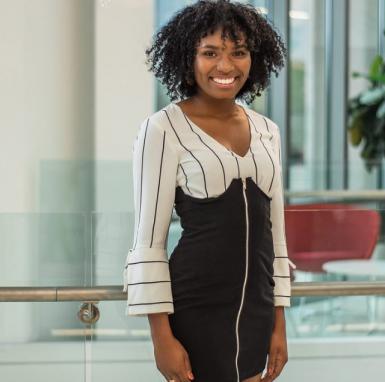Student-produced YouTube show shares Black IU student experience

Senior journalism major Amaiya Branigan wants to give Black students control of their own stories with her YouTube show “What’s Black About It.”
Branigan launched the show in March as a personal project. The first episode is a lighthearted account of Black history at IU, from the university’s first Black graduates (Marcellus Neal in 1895 and Frances Marshall in 1919) to the establishment of the Black culture center named after them, and the turmoil along the way.
“I’m highlighting these stories really to just try to get people to understand that the world is bigger than just (them),” Branigan said.
Branigan, an African American and African Diaspora Studies minor, consulted IU professors, Indiana Daily Student archives, library archives and word of mouth to piece the history together. Senior media major Jordan Arnette filmed the episode.
Though thoroughly researched, Branigan describes “What’s Black About It” as “an entertainment source that just so happens to make you smarter” rather than an educational program. But when English professor Vivian Halloran came across the show while researching virtual communities, she asked Branigan if she could use it in her intersession course, Talking Race, Doing Antiracism.
Halloran said she follows the #citeblackwomen movement, which encourages scholars to not only broaden their sources, but to consult with the sources before citing their work. She said her students appreciated hearing the perspective of a Black student rather than a scholar describing the “student experience.”
Branigan’s student experience is exactly what inspired the show. During the summer before her freshman year, Branigan got to know other Black students through the Groups Scholars Program. But when fall semester began, she was the only Black student in some of her classes, and she experienced microaggressions from people who made assumptions about her based on her race.
“One of the most memorable would be when my instructor insisted that my class partner not touch my hair even though I’d given her permission to do so,” Branigan said. “She eventually went on to say that’s ‘just what she was taught’ after I told her how it made me feel. She apologized, but it always stuck with (me) that people have this preconceived idea of every Black person before they even meet them.”
Some of Branigan’s future episodes will not only serve as a voice for Black students, but as a resource for other students and faculty to understand and identify Black students’ experiences, including microaggressions. She’s also planning an episode about why the phrase “All Lives Matter” rather than “Black Lives Matter” is hurtful to some people.
Branigan said she plans to release a total of six episodes before she graduates in May. After college, she wants to find a job at a TV news station, a production company or a communications firm.

